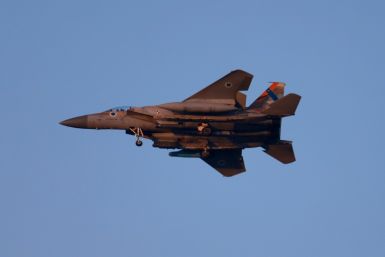US Navy plans to upgrade powerful railguns, laser weapons on ships by 2020

The United States Navy is taking the lead to develop a higher-powered laser weapon and electromagnetic railgun for self-defense system enhancement on their ships. The US Navy aims to upgrade the technologies into more powerful missile-defense system on ships with the capability to trigger an explosive farther out from its target by 2020.
The Navy has already demonstrated the 30-kilowatt Laser Weapon System, or LaWS, carried by an old transport ship called USS Ponce in September 2014 that melted a hole in a drone and detonated explosives, according to press release by the Office of the Naval Research. The marines also developed a prototype railgun technology that can launch a projectile farther and faster than guns can fire, and could destroy cities, which the future upgrade is proposed to be used also by the Army for inland defense.
But the 30-kilowatt laser is still an underwhelming weapon as it takes time to burn through the hole of its targets, according to a report from US Naval Institute. With this in mind, the Navy plans to upgrade the current laser gun into 100 kW or more, that is able to dispatch a single incoming missile or drone more quickly and then turn to the next threat.
Besides lasers, the Navy also eyes into railguns, powerful weapons using electromagnetic forces to drag and then accelerate a projectile mounted on a sliding rail. The Navy is already developing a version that would allow 10 shots per minute, which can support troops fighting miles inland. The railguns are also proposed for the Army missile defense system that can hit incoming missiles farther out from their target, and at lower cost than missiles.
The Navy which leads the development will work soon to figure out how to deploy the weapons. While the Army is working on the doctrine and tactics, techniques and procedures for using the railgun, as discussed in the panel presentation at the Directed Energy Summit on July 28.
However, Rear Admiral Bryant Fuller, chief engineer at Naval Sea Systems Command, or NAVSEA, said "the Navy will try to move the technology forward as quickly” and “use multiple approaches to try to get to the same place” for the roadmap of directed-energy weapon efforts. It is despite Pentagon’s newest Better Buying Power guidance that implements specific policies on speed to market technologies.
The Navy is ready to put the weapons of the future out at sea, according to Fuller. The manual-load version of railgun is scheduled to be tested at sea in 2016 on a Joint High Speed Vessel, while LaWS, despite the harsh environment in the Persian Gulf where USS Ponce is placed, will stay operational as long as the ship remains at sea until 2017 or longer.
Contact the writer at feedback@ibtimes.com.au, or let us know what you think below.






